WO James Hubbard served on No’s 120 and 59 Sqn flying the B-24 Liberator.
Many thanks to his grandson, Nick Hubbard, for providing this article and photographs.
James Maurice Hubbard, more commonly known as “Jim” or “Jimmy”, was born on 3rd June 1923 and brought up in the “Worlds End” area of Chelsea, London. The 2nd of 3 children, by the age of 16 he was listed in the 1939 census as an Inspector Hard Chrome and had some kind of role associated with the Pontiac garage in the local area.
We have few clues as to how and when he was conscripted or undertook his training; according to my Father, Jim volunteered to join the RAF on 9th December 1941 – apparently as a Wireless Operator – and reported for duty on 28th January 1942. However, we know he had qualified as a Flight Engineer (service no 1604116) 27th October 1943 and was wearing his recently earned brevet and Sergeant’s stripes in his wedding photo that December.
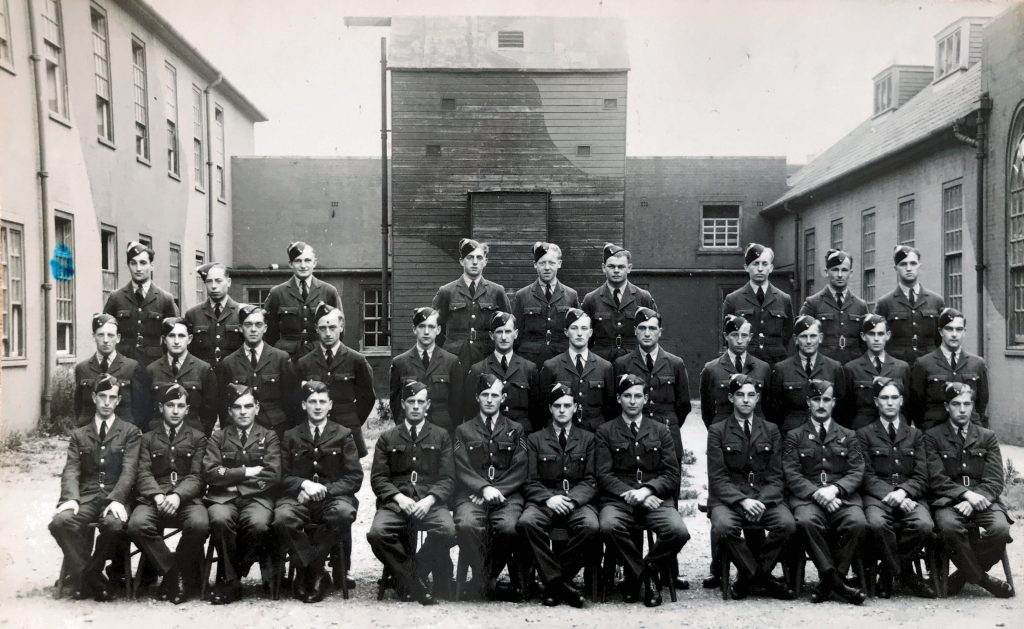
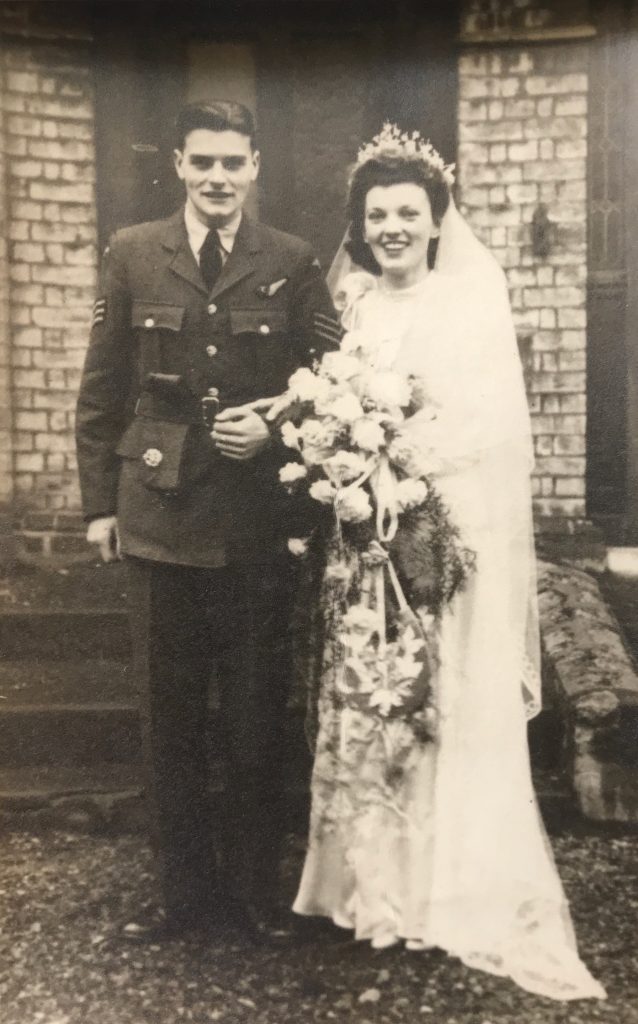
Immediately after getting married he travelled to Canada to await his training assignment, which came in February 1944 when he was sent to No.111 Operational Training Unit (OTU) in Nassau, Bahamas; it is at this point his logbook began and presumably his first experiences flying with his eventual crew in the B-24 Liberator over a 3 week period. The Flight Engineer in the Liberator also performed the role of dorsal gunner when required (the turret was conveniently close to their usual position behind the Pilot and Co-Pilot); this gunner role was rarely performed but the perpsex dome otherwise provided an excellent view-point for monitoring the engines; as part of his training in the Bahamas, he undertook a gunnery course (see image left) which he passed with 76% and the remark “average”
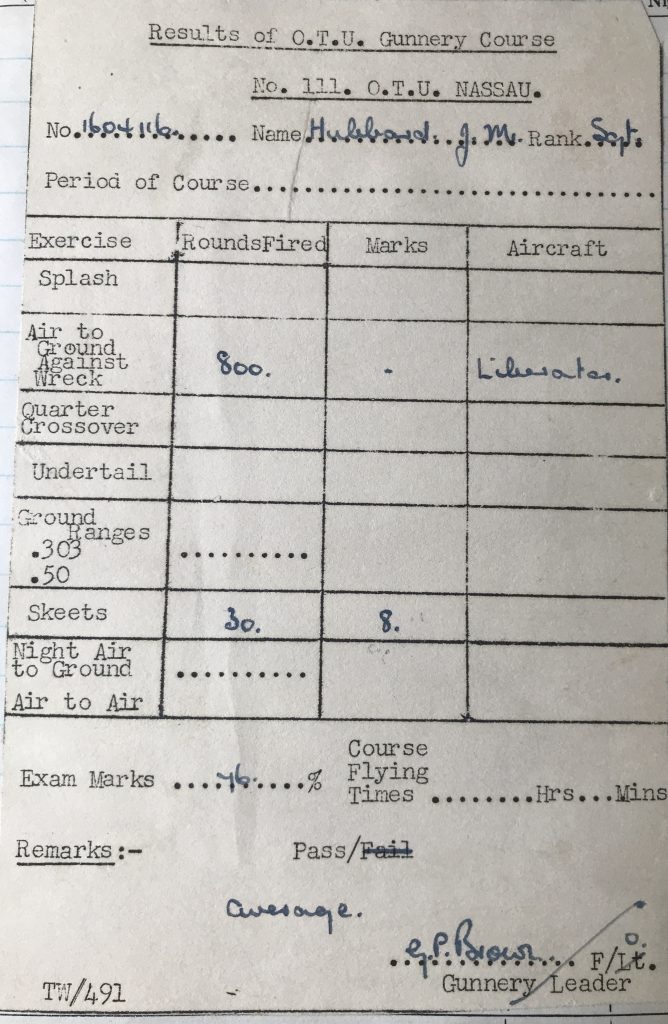
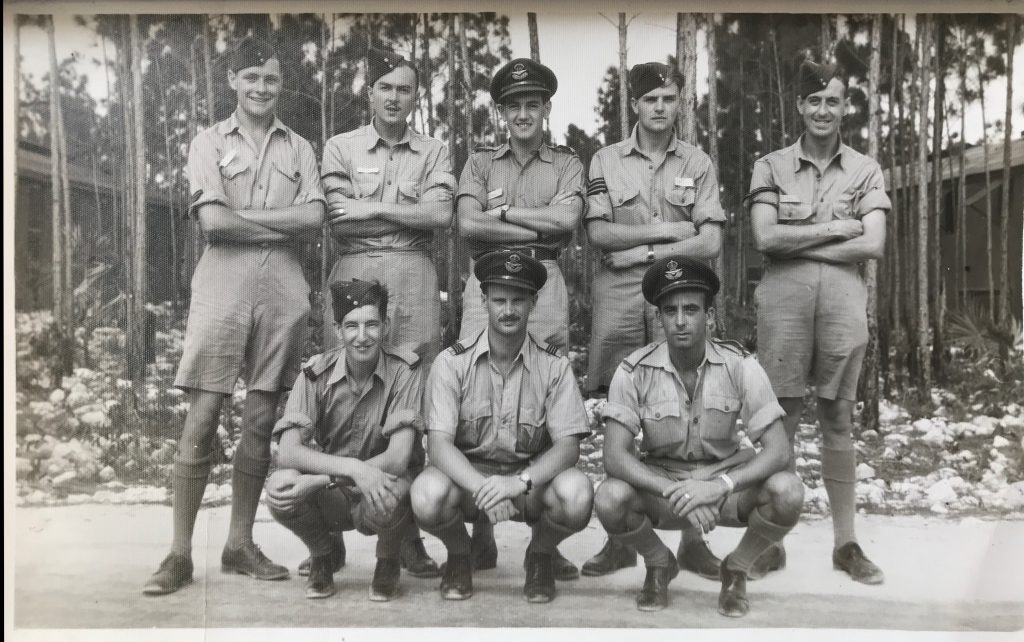
In May 1944 the crew was posted to 1674 Heavy Conversion Unit at RAF Aldergrove, Northern Ireland, for a further 3-week period of training – presumably now in the harsher and more realistic environment of the UK home waters and North Atlantic.
In the week that Jim celebrated his 21st Birthday, the Allied invasion of Europe began and he was transferred to 120 Squadron, RAF Coastal Command with whom he would serve from June 1944 right until the end of the war in Europe. 120 Squadron, one of the first equipped with the very long range (VLR) Liberator flying out of Iceland at the time, had made a significant contribution to the Allies’ victory over the U-Boats in the mid-Atlantic during 1943 and achieved the highest U-Boat “kill” score of any Squadron during the war. By the time Jim’s crew joined 120 Squadron, they were operating out of RAF Ballykelly, Northern Ireland, and it was the tail-end of “Operation Cork” – the intense patrolling of the Channel and South West Approaches intended to contain the U-Boat threat against the Allied invasion fleet of Normandy. During July the Squadron was assigned to the very long-range patrols up to and along the Norwegian coast and transit routes of the U-Boats – most of which had fled their Bay of Biscay bases following the fall of France. Several of these flights were 15 hours or more in duration and the endurance of the crew rather than the aircraft was often the limiting factor on these tough, monotonous, noisy and cold patrols over open ocean.
From September through to the end of the war, a significant part of their role was responding to Admiral Donitz’s campaign within Britain’s inshore waters. Whilst the U-Boats were by now far less effective; constrained by the hugely effective anti-submarine capabilities of the Allies, they played to their strengths; now equipped with Schornkel devices – that allowed them to remain submerged for significant periods of time, the Germans used the peculiar oceanography and wreck shrewn shallow waters of the British Isles to effectively lay hidden from allied anti-submarine shipping and aircraft and wait for convoys to come to them. This led to far less sightings, attacks and “kills” for Coastal Command during the last 9 months of the war, although the importance of their deterrent effect never lessened.
In November 1945 Jim was promoted to Flight Sergeant, and in December the crew was converted to the newer Mk VIII Liberator which was equipped with improved radar but slightly less armament in order to provide greater range; this new model also demanded an additional crew member taking the total compliment to 10.
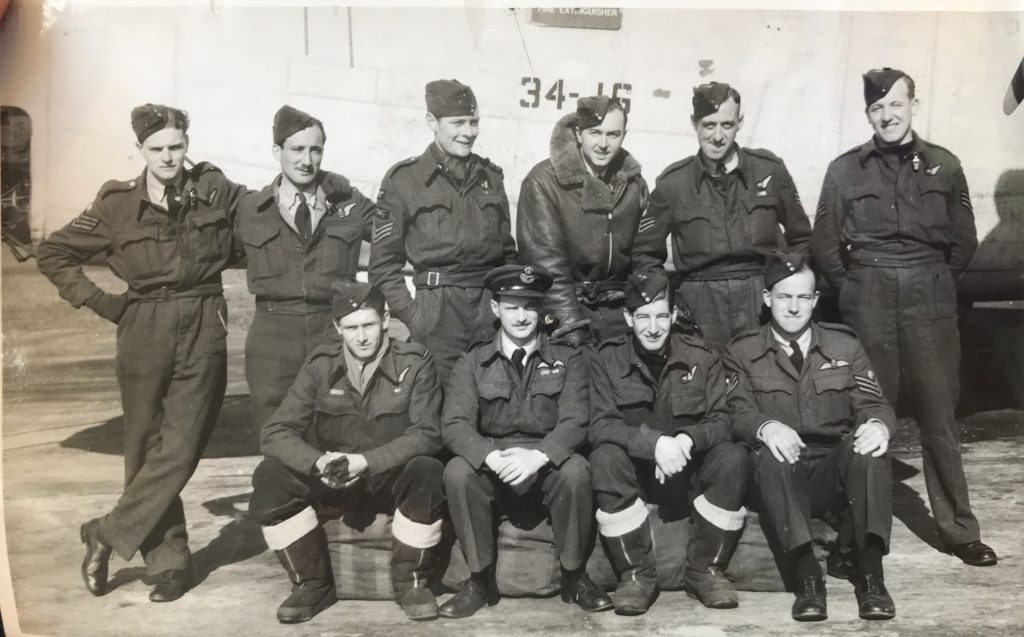
By the end of May 1945, Jim had flown 44 operational sorties totalling over 500 hours (half of which were flown in darkness). In June, following Victory in Europe, 120 Squadron was disbanded and many of its crews and B-24 Liberator aircraft were transferred to RAF Transport Command, serving with the reformed 59 Squadron, eventually out of RAF Waterbeach in Cambridgeshire. They performed a “trooping” role, ferrying up to 25-30 troops and other personnel at-a-time between Britain and the Far East, initially to support the continued war against Japan, and then from August to support the enormous de-mobilisation of the war effort. Mauripur in India (modern day Karachi in Pakistan) was the terminus of their route that they travelled to and from, stopping off variously in Malta, North Africa, Palestine, Iraq and Persia.
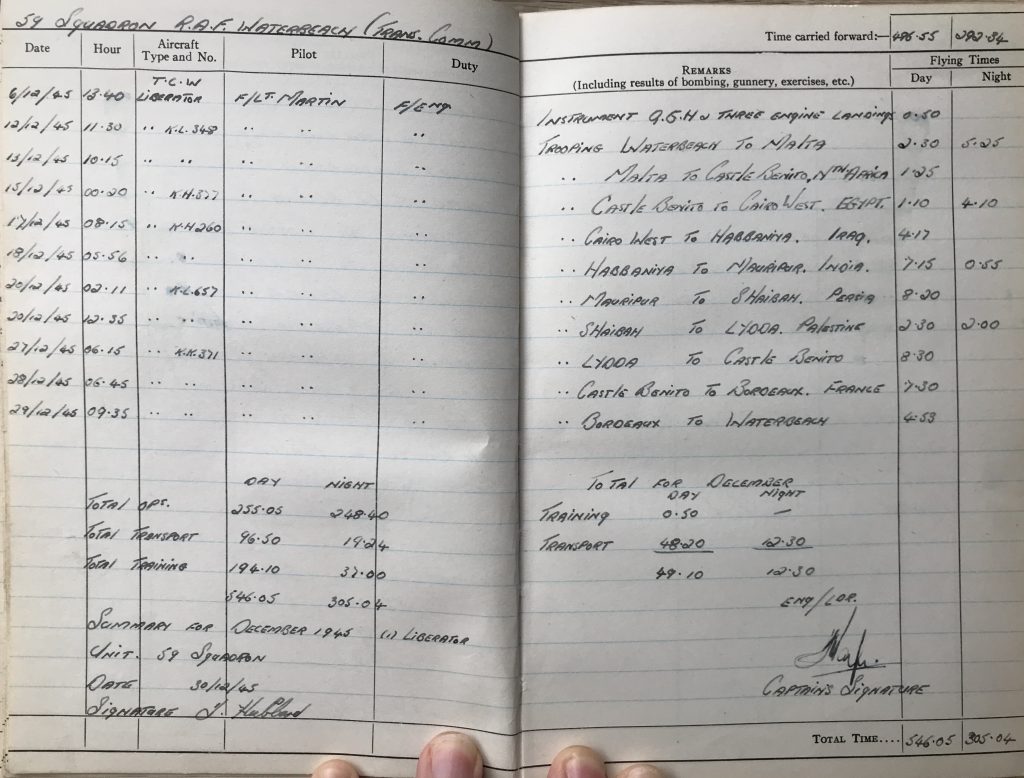
The compliment of crew for Transport Command trooping operations were half of that required for Coastal Command anti-submarine patrols allowing maximum capacity for passengers; the 1st and 2nd Pilot were retained, as was the role of Navigator, Flight Engineer and a single Wireless Operator; the roles of 2nd Navigator (flights were shorter and therefore fatigue was less of a concern), gunners (the route did not travel through any enemy territory) and additional wireless operators were disposed of. The Flight Engineer’s role now appeared to encompass that of “loadmaster” ensuring that the distribution of passengers and luggage was maintained within the aircraft’s permitted centre of gravity throughout the flight. My one and only recollection of my Grandfather talking about his service during the war involved a story he told about him losing his temper with a group of passengers that failed to heed his warnings during such a flight!
Early on during this period with 59 Squadron Jim was promoted to Warrant Officer and he continued to fly with two other members of his crew from 120 Squadron, including his pilot and captain, Flt Lt W.J.Martin DFC.
59 Squadron was disbanded in May 1946 and Jim demobbed within weeks. His total logbook hours amounted to 976 hours! He returned to civilian life and enjoyed a further 55 years of marriage, 2 Children, 3 Grandchildren, a successful career in electrical and then office furniture wholesale, and lived all his life in Chelsea, passing away in April 1999 at the age of 75.